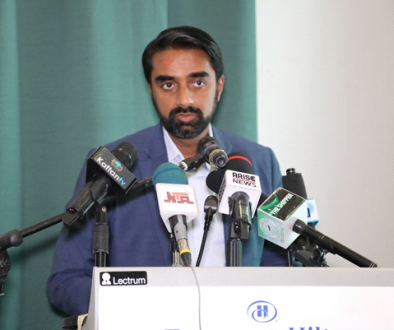Leveraging the Female Talent Pool in Selected Value Chains in Nigeria – An Oxfam Project.

The Convention on Business Integrity (CBi) has requested a two-month, no-cost extension to project completion date, i.e. till September 29th, 2017. This project is carrying out a Gender Impact Assessment of the local sourcing policies of selected, large, food and beverage companies in Nigeria. We are tracing how well they are leveraging the Female Talent Pool in their selected agricultural value chains and this approach has so far attracted a lot of interest from donor programmes funded by DFID UK and DFID Nigeria who would like to co-brand the reports and support the effort to ensure very wide dissemination of the findings. These donors find the approach of starting with the sourcing policies of companies and then working backwards down their respective agricultural value chains to ascertain the level of women participation, noteworthy. Oxfam’s Behind the Brands campaign was CBi’s main inspiration.
The organisation has so far completed our field study and are currently analyzing the data and preparing reports. However, we feel that impacts would be sub-optimal if we do not sufficiently engage the private sector participants, our women’s empowerment platforms and groups as well as policy makers to generate robust debate, and agree on specific steps we can track with the companies involved. The project lost time in looking for suitable replacements for non-responsive companies and suppliers, which we acknowledged from the start would be a major risk for this approach. This request has since been granted by Oxfam on July 21, 2017.
The table below has been updated and depicts the responsiveness of the Food & Beverage companies.



Strategy
The overall strategy for the project is to go down the value chain ideally starting from the companies: i.e. from the companies to the suppliers/processors/millers, to the aggregators and then finally to the producers/farmers. For companies with low responsiveness, such as Nigerian Breweries, Olam, Unilever and Cadbury/Mondelēz, engagement began at the level where we had an entry point along the value chain. CBi is using Oxfam’s insider (partnership/engagement) and outsider (campaign) approach to private sector engagement to ensure results are achieved.
Project Progress
Based on our engagement with the companies, CBi has been successful in going down the value chain of four Food and Beverage (F&B) companies in Nigeria namely: Nestle, Guinness, Chi Ltd and L&Z Integrated farms. Interviews with both the companies and their suppliers were conducted as reported in the last interim report. In the last two months, the field work was started and concluded. Field coordinators were sourced and contracted to carry out the work along with the project team. Pretests were conducted to ensure the research instruments developed were valid. Focus group discussions (FGD) and in-depth interviews (structured questionnaires) were held in six key states namely: Oyo, Ondo, Katsina, Kaduna, Kano and Kogi. Again, these 6 states are predominately where F&B companies locally source their agricultural raw materials.
| State | Crop(s) |
| Kaduna | Grains (Maize & Sorghum) |
| Kano | Dairy |
| Katsina | Grains (Soybeans) |
| Kogi | Cassava |
| Ondo | Cocoa |
| Oyo | Cassava |
| Field work | Target | Completed |
| FGD | 14 | 16* |
| In-depth Interviews | 62 | 62 |
*16 FGD were conducted as opposed the 6 originally planned for. This had a bit of an implication on the financials (see financials for more details).
Highlights from the findings:
The following suggest preliminary findings from the field work:
Participation of Women & Men:
Findings show that women tend to participate in farming activities as much as men in the study area. Nevertheless, fewer women in general are involved in input supply perhaps due to long distance and the tediousness in movement attached to the job. Men and women seem to play distinct roles in the value chains even at the producer/farmer level. Men and women are in involved in different production activities for different crops. Some activities are done by men while others are done by women. For instance, men are mostly responsible land clearing in the production of maize and also activities that include establishment and management of the farm, whereas, most of the women in the maize value chain are found cleaning, sorting and bagging maize. Production of maize is said to a labour-intensive enterprise. There are female farmers in maize and they are also involved in planting, tilling the ground, harvesting and marketing of their produce. Nevertheless, findings from the field suggest that female farmers, especially those in the North, tend to be predominantly small-scale holder farmers compared to their male counterparts.
The few that are considered large-scale farmers, i.e. female farmers in Kaduna and Katsina States, mostly use their money to hire labour for farm activities rather direct involvement. There is a story of the female supplier who goes by pseudo name in order to avoid detection as the owner of a farmland. This is not uncommon practice as the Islamic culture is said to exempt women from hard work. On the other hand, it may be strictly for cultural reasons only and not religious, as this corroborates how different the picture is in the South, women are noticeably more visible at all levels of the value chains. Female farmers of the same religion are able to purchase land openly and freely work on the farms with the members of the opposite sex.
Both men and women in the value chains face the following challenges:
- Insect destroys their crops which affects the quality of their produce
- People buy their produce at a low price because of the quantity of the crop
- Access to finance
- Most people buy their produce on credit and times to pay back is an issue
- Access to improved seeds
- Need fertilizers and herbicides
There were no unique challenges faced by the women only. However, the prioritization of the challenges between both sexes differ. It is important to note that some women in North are restricted from going to sell their produce in the open market. Women tend to express land ownership and access to finance as major or top most challenges for them.
Access to and Control of Resources:
The FGD showed that the men are more financial empowered than the women and also that they have vast land for farming than the women, leading to higher productivity and income for the men. It is often difficult for the women to bargain labour cost with the men directly, they have to go through the men to do the negotiation as described by a lot of respondents.



52% of female farmers and 50% of male farmers reported lack of farmland was their major constraint, 39% of female and 25% of male farmers indicated lack of availability of finance in form of loan was their constraint and 10% male and 9% female respondents pointed to farm machineries as their major problem. This suggest that female farmers are more at a disadvantage to men in terms of access to and control of resources. In addition, there is no evidence to suggest that demographic factors such as age, level of education and farming experience as well as being a member of cooperative society influence women’s participation in value chain activities. The latter is particularly interesting as one would have thought differently. From the literature, being a member of a cooperative is often heralded with so many benefits and advantages. However, perhaps the notion of the cooperative is not the problem rather it is in its structure and formulation where the problem lies. A case study done on Mrs Hannatu Samuel, leader of a female cooperative known as Hanwa Multipurpose Society, provides credence to this assessment. Cases studies such as the just mentioned have been developed to capture the human stories behind the women who participate in the value chains of these top companies.
Gender based social norms and values:
As earlier mentioned because of their religious and cultural restrictions in the North, some female farmers in the North are not allowed to go the open market, the men and their young daughters help sell their crops in the open market. This can perhaps lead to some price discrepancies. There is evidence to suggest some changes in social norms and values are beginning to take place given the current economic climate. The harsh economic realities have prompted some men to allow their wives work and go out to sell their produce in the open market so as to contribute the welfare of the family. Women on their part seem to be gaining a voice by coming together and introducing other female relatives and friends to agricultural work.
Activities to be completed:
- Recommendations: The gaps and suggested remediation interventions over the short, medium and long term is currently being developed. This would include projections of possible improvements in impact with cost/benefit analysis highlighted for each.
- Policies & Strategies (Advocacy): The policies and possible strategies that arise from the proposed intervention would be made widely available for dissemination and publishing to encourage broad based adoption in the private sector. They would be presented in the form of case studies, infographics etc. Advocacy visits per company, (i.e. a total of 4 visits) would be carried out by the team to influence the companies to implement the remedial plans and it is in their best interests. This analysis includes the positive and negative effects of how large F&B companies do their local sourcing would be done. This would also include the import of doing nothing.
- Publicity Campaign: A publicity campaign will be designed with the Platform including WimBiz. WimBiz will be required to run with the designed campaign to shed more light on why it is important for women to participate along the F&B agricultural value chain. A platform meeting is scheduled for late August where a validation of the reports will be done with platform members and other stakeholders.
- Dissemination event: The dissemination event will be held to launch the study and share findings. This will be held in the month of September.
Risks and Issues
The table below highlights an update to the risk/mitigation (contingency) plan:



Conclusion and Lessons Learnt
Key lessons learnt are:
- Initial engagement with companies is necessary but not always sufficient- Alternate strategies must be in place in event of non-responsiveness. This was flagged as a risk in our proposal and the mitigation strategy was to present the business case for participation to each company. This was done for all companies we met but for example, Olam was still reluctant to share information. For non-responsive companies, the plan is to start engagement at an entry point anywhere along the value chain.
- Time required in between engagement and gathering data from companies- It was taken for granted that we had early engagements with some companies. The time and logistics required to meet with companies and with specific people within the organization was underestimated. Some key personnel were either too busy or were simply unavailable. Although not our preference, we decided in cases where we it was almost impossible to meet directly with key personnel to administer the questions, we sent them the questionnaire for their review and inputs.
Time Efficiency- We had initially anticipated conducting the focus group discussions and the structured questionnaires at different times. Experts advised against this and recommended conducting both the FGD and structured questionnaires at the same time with respondents to ensure relevance and validity. This led to significant cost savings for the project as it was an extremely cost-effective approach. We plan to hold a wider dissemination event along to utilize savings from the field work, also to produce more output items such as a documentary, promotional items and printing of more reports. The approval for additional activities will be made at the end of August 2017


